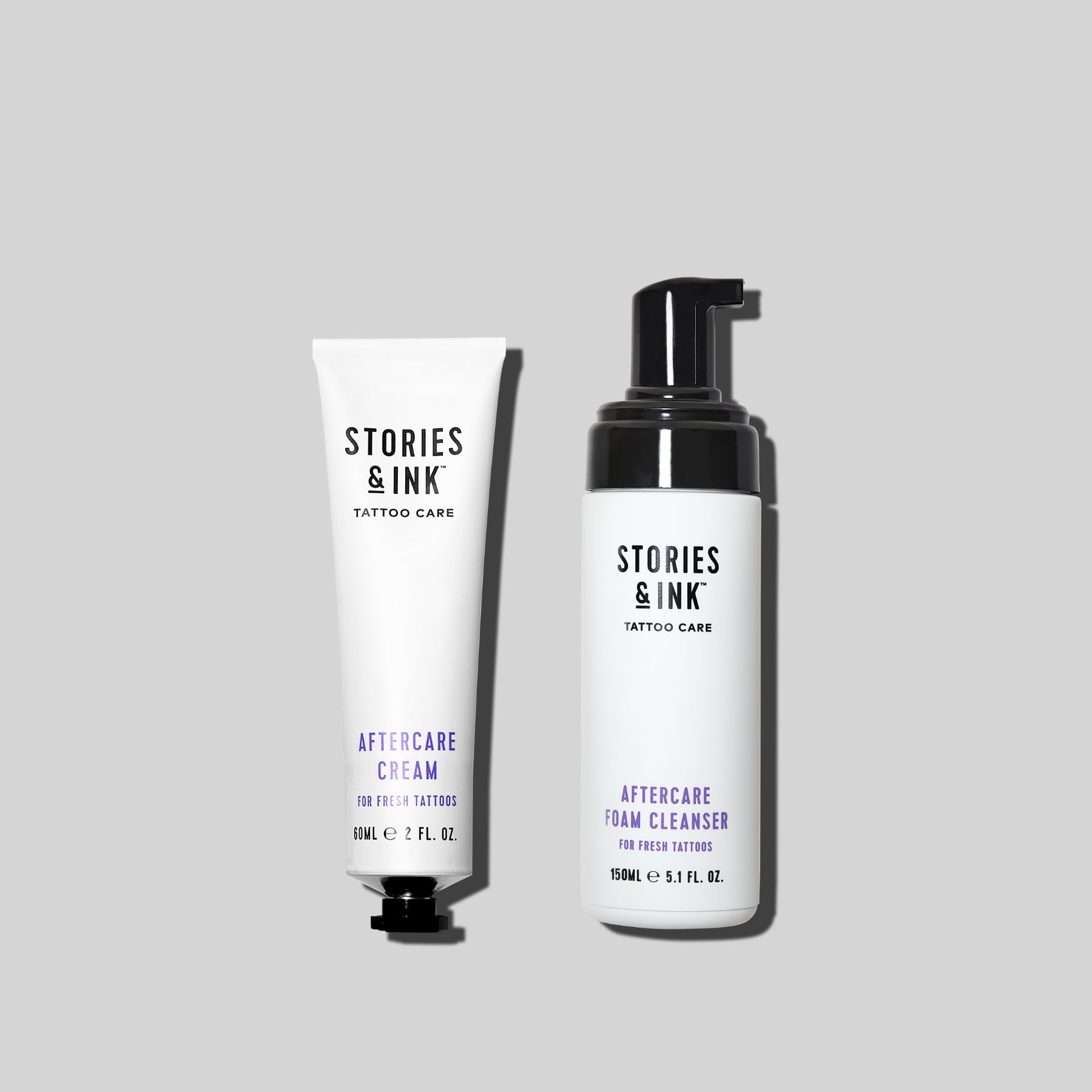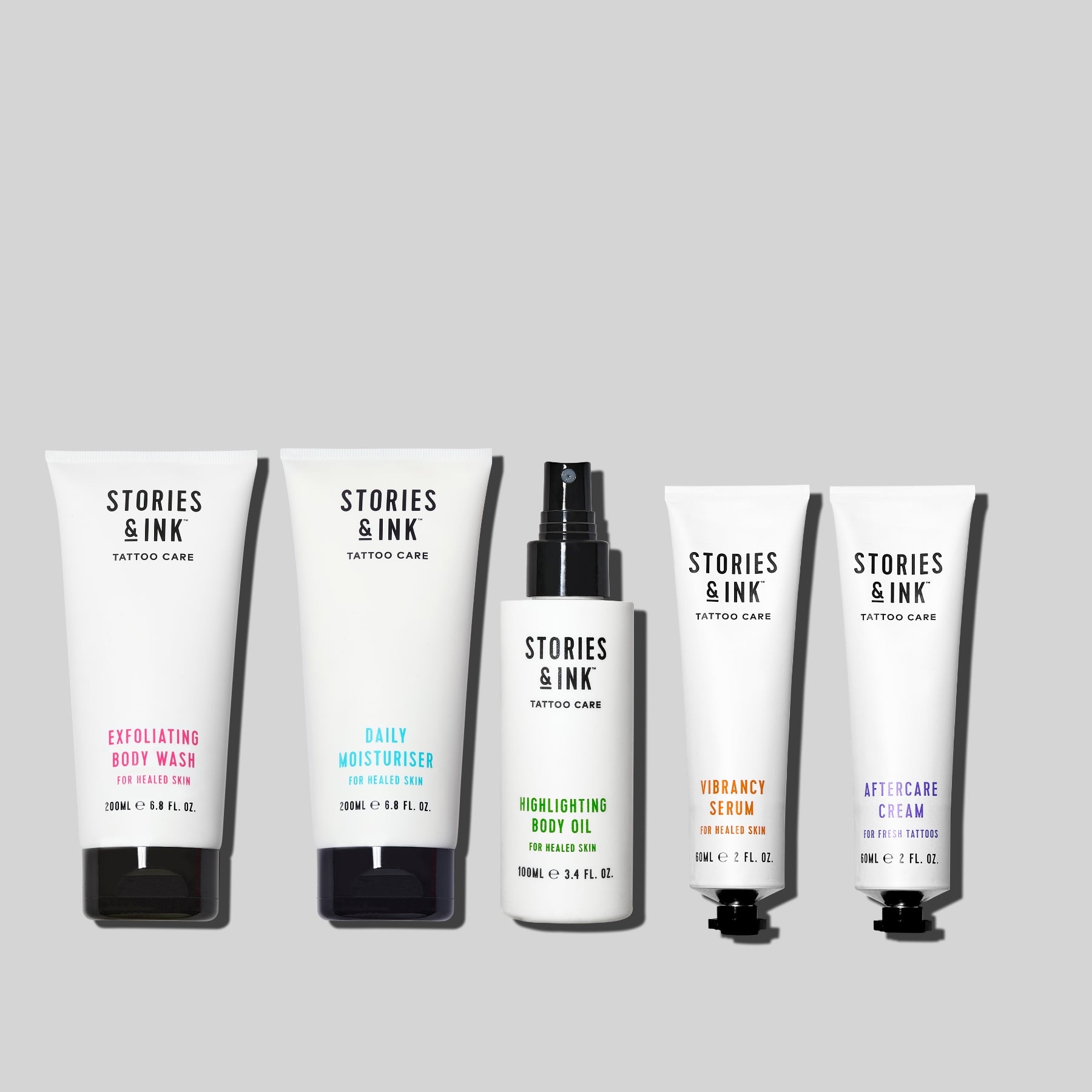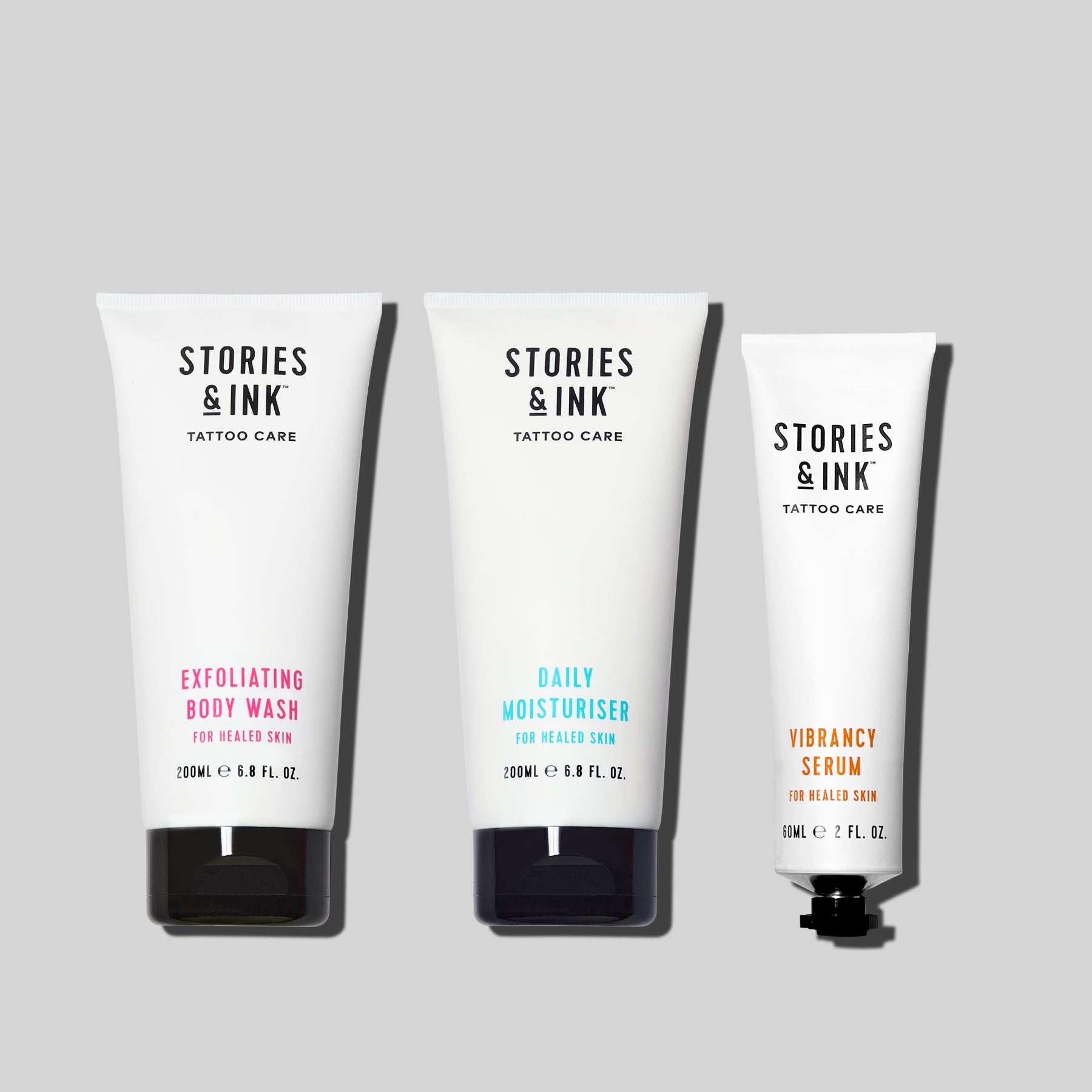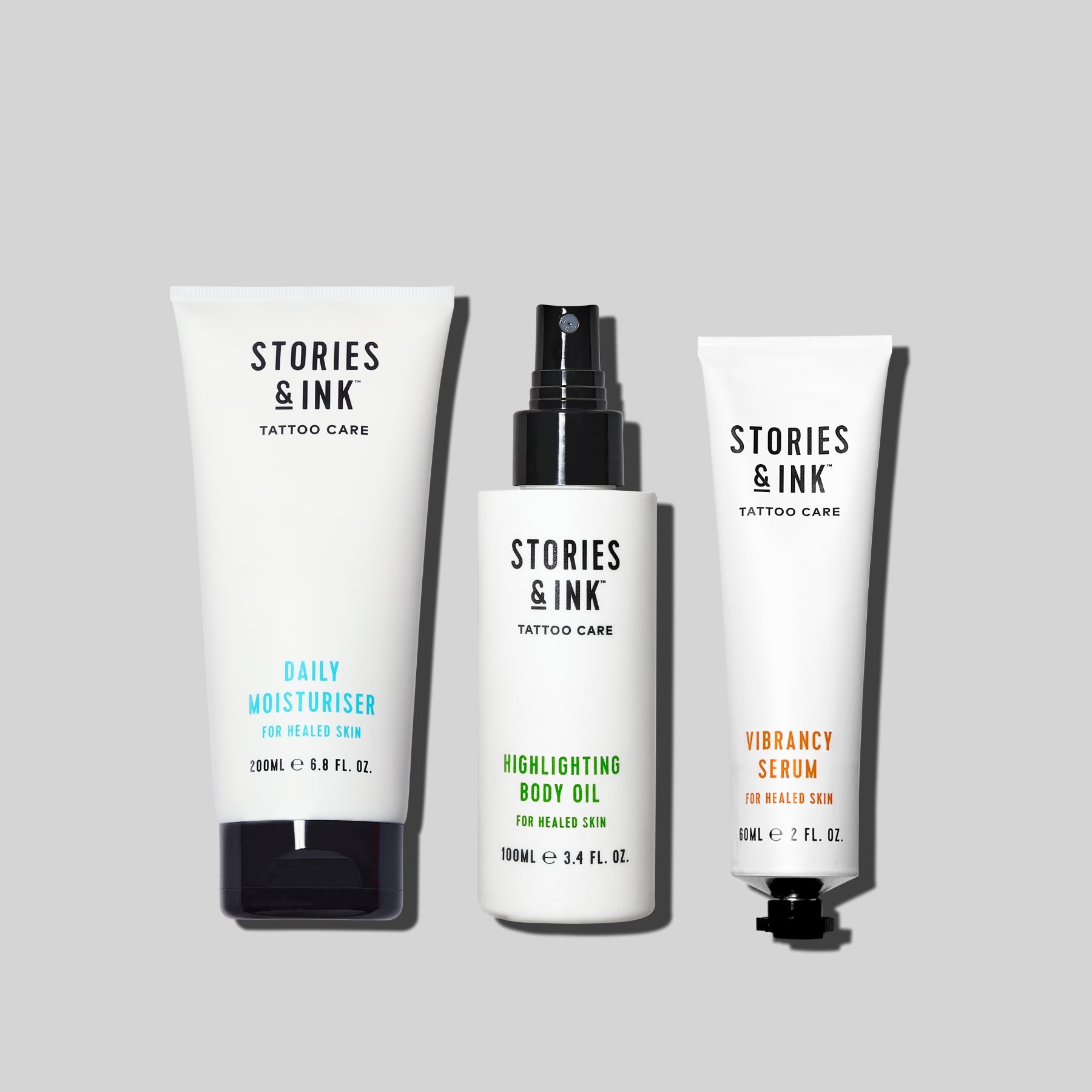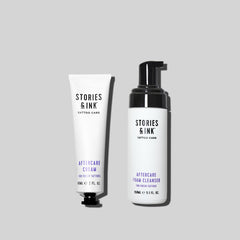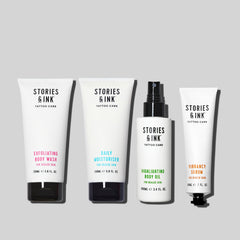Tattoo placement might seem like a question of taste — but as tattoo artist Tanya Buxton explains, it’s often about far more than that.
How and where a tattoo sits on the body is central to the work of Tanya Buxton (@tanyabuxton), tattoo artist at Paradise Tattoo Studio in Cheltenham and founder of the Mastectomy Tattooing Alliance (MTA). From scar cover-ups to confidence, trends to trust, we caught up with her to discuss all things placement.
When thinking about placement, what’s a good starting point for customers?
I think placement can depend on the type of tattoo you want. Is it a big piece or are you looking for something smaller? How visible do you want it? Do you want to cover it with clothing easily, be discreet, or show it off all the time? Also, depending on the type of design itself, if something is quite detailed and intricate, that’s going to have to be of a certain size. [Saying all that], you can have it where you want really!
What about body hangups and self confidence?
I think tattooing has a lot of healing and empowering abilities. Seeing it first hand with all the work I do with scar cover-ups and medical tattooing, it has so many layers to it. It can make you feel more comfortable in your own skin again. Like you say, if there’s a body part that you feel a bit self conscious about, you can choose to decorate it, which is a way of either disguising the hang up or embracing it and celebrating it.
I think placement-wise, if you’re conscious of a body part in particular, it can work really well to either cover, disguise or celebrate that. But I don’t think that necessarily should be a deciding factor on where you should have something.
Tattooing can definitely help if you don’t want to show that body part, and tattooing can be amazing for building your confidence back up and turning something you didn’t like to look at into something you do like to look at. But I think it’s just a personal choice.
Are there any set placement rules for traditional tattoo motifs and designs, such as hearts or daggers?
You can really delve into the meanings of tattoos and where they should be and where they originated from and their meanings depending on which part of the body they’re on and stuff like that. But I think from an aesthetic point of view, placing it on a part of the body or a limb where it compliments the shape and flow of that design is important.
For example, something that has a lot of straight lines you don’t particularly want on a limb where it’s going to wrap around and distort it. But again, I think it’s down to the wearer. If you want a swallow on your chest, have it. If you want a swallow on your arse, you have it there!

So it's ok to pick a placement just because you want to look hot?
Don’t we all want to look hot? I think everyone has their own opinions on things like that. For me, if it makes you happy then do it!
Have you noticed any current placement trends?
Trends come and go, the same it does in fashion and music. I feel like we’re seeing a bit of a revival at the moment of 90s and early 2000s designs, but they have a bit of a modern twist on them now.
But I think the industry can do so much, like tattooers can do so much, the artistic ability, there’s so much variety because we all have our own thing going on. There’s peaks and troughs in trends, but I think most styles are covered and popular across the board.
Your work at the MTA involves tattoos following top surgery. What are the considerations here?
I think when it comes to a top surgery scar cover-up tattoo, it depends on the individual. Some people want to completely cover that scar, other people want to incorporate it into the design as a way of celebrating the scar and framing it. I think it’s down to the individual on how they feel about the scar and what they want to achieve from the tattoo. And also how big they want to go. Some people want to keep it quite small, other people want to go full torso, and they’re always things to talk about.
I always approach tattoos like that, or any kind of scar cover up to be honest, with the view that the design should compliment the body first and cover the scar second. I think it’s really important that the design fits that body part and body shape. And then it’s my job to be clever about the design to make sure we’re covering that scar well.
Some people fall into the trap of thinking they have to put a design exactly on the scar, and that sometimes can draw the eye to it. Whereas if you put a design that really fits and flows with all the curves and muscle shapes of the body, it’s like your eye accepts it’s there because it fits on the body. The scar almost falls into the background.
What are your rules on visible tattoos, such as the face and neck?
For me, unless you’ve had quite a bit of extensive coverage, I won’t do below the wrist or above the collar.
For young people, it can be a difficult one. On the one hand, you’re an adult of consenting age and you could argue, “who are you to tell me I can’t have it there?” But on the other hand, I do feel a level of responsibility. Because if you’re freshly eighteen and want a massive tattoo on your neck, whether we like it or not, that’s probably going to impact you down the line.
And from my personal experience, all of my teenage tattoos are either covered up or lasered off! What you like at eighteen is not what you like at thirty-eight. It’s a difficult one but that’s my general rule: until you have a bit of coverage I’m not going to do ones like that.
Which places on the body can be more problematic to heal?
Hand and finger tattoos can definitely be difficult to heal. They’re prone to wear and tear a bit more, and they’re always moving about as well. The inner elbow ditch - that’s another one. I think anywhere on a joint can be difficult to heal because you’ve got that constant movement while the skin is trying to heal.
 “Hand and finger tattoos can definitely be difficult to heal."
“Hand and finger tattoos can definitely be difficult to heal."
Do some clients not care about placement at all?
You do see that patchwork look. I think that the more fine line, smaller tattoos are becoming more fashionable now, so you’re seeing the more random placements. It’s kind of each to their own. From an artistic and aesthetic looking perspective, I like to try and put something where I still bear that body part in mind.
If someone has a particular design they like and they don’t know where they want it, I’m thinking, composition-wise, what would suit a body part? So I might suggest something... for example, if someone wants a lighthouse, I’d suggest a forearm or calf because that limb is going to compliment that shape. It can be a bit of a personal thing.
What makes a great client?
We get a lot of initial enquiries where people are just like, "I want a tattoo." But if you can, try to come a little bit prepared with a bit of a brief. My ideal client would have a bit of a brief, including a few reference images, so I get a clear idea of what’s in their head.
But then they’re open to my input and creativity. So I’ve got a bit of a starting point from them, but they’re open to let me do my thing. When people come in and say "do what you want" it’s a bit of a nightmare sometimes!
For the actual tattoo appointment itself, try and wear something that’s comfortable and allows easy access to the area. Don’t wear your best clothes to a tattoo appointment or something that’s white!
What about trust and collaboration when it comes to things like the size of the tattoo and placement?
I think it’s important to collaborate but also to trust what your artist is saying. Some things do need to be a certain size to be able to read well as a tattoo and also age well as a tattoo.
So I think it’s important to trust the expert advice from your tattoo artist. But for tattoo artists it’s also important to listen to your client as well, and try to meet their needs. As long as it’s going to work on your skin, you can meet in the middle somewhere.
Read more about Tanya's work with the MTA, From Mastectomy to Masterpiece: The Tattoo Artist Transforming Lives
